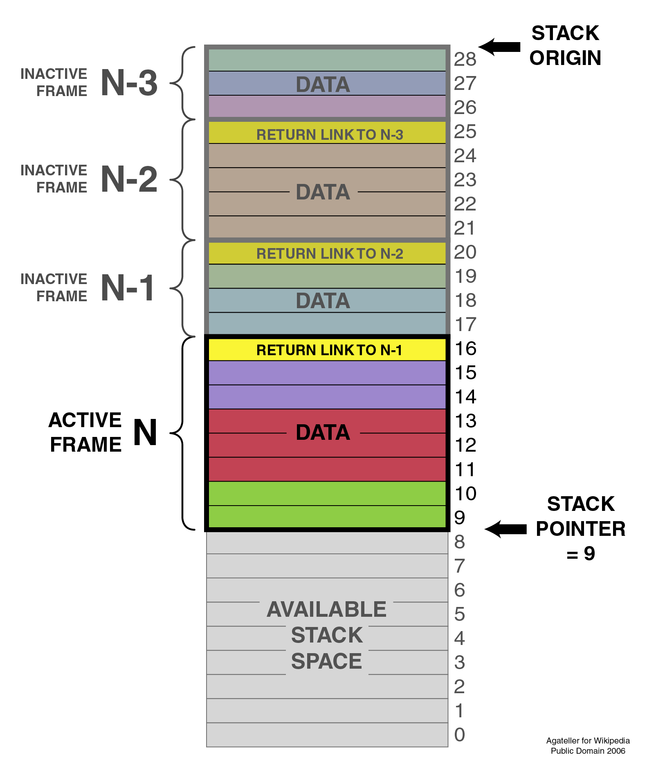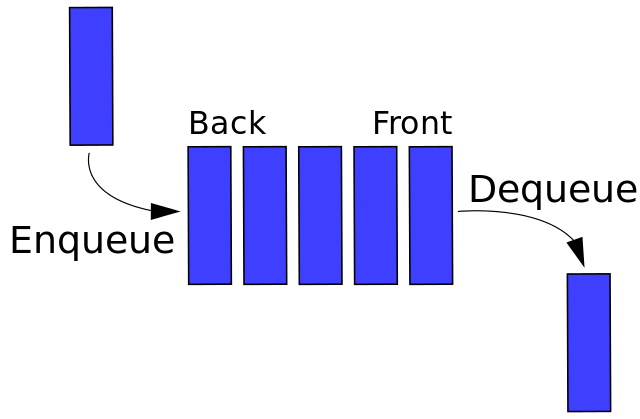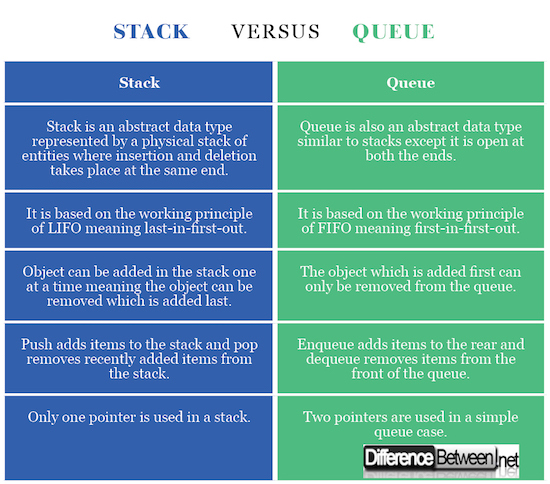Difference Between Stack and Queue
Both stack and queue are defined by a sequential collection of objects organized in a particular order in a data structure based on some real-life equivalents. Both are linear data structures used to efficiently store and retrieve data elements, with the exception of working principle. A stack is an ordered list of elements where all insertions and deletions are made at the same end, whereas a queue is exactly the opposite of a stack which is open at both the ends meaning one end is used to insert data while the other to remove data. The main difference between the two is their working mechanism.

What is a Stack?
A stack is a linear data structure used to organize data in a particular way so that it can be used efficiently. Machines need directions to accomplish tasks both simple and complicated in the form of commands. Similarly, data can be structured in many different ways and one of the most efficient data structures is stacks. It is an abstract data structure that resembles a physical stack where objects are organized in a particular order, specifically based on a last-in-first-out (LIFO) mechanism which means the last item added is to be accessed first and vice-versa. The most common application of a stack data structure is backtracking or the Depth-first search algorithm.

What is a Queue?
Queue is also a linear data structure, somewhat similar to a stack data structure, except it is open at both the ends. It’s a sequential collection of objects that resemble a queue of people. Unlike stacks, it is based on the first-in-first-out (FIFO) principle meaning the earliest added item can be accessed first and vice-versa. In a queue, one end is used to insert the items and the other end to remove the items. Like a line of people, new entities are placed at the rear and already-served entities are removed from the front. Two operations are allowed on a queue: enqueue and dequeue. Enqueue refers to addition of items at the rear and dequeue means removing items from the front.
Difference between Stack and Queue
Meaning of Stack and Queue
Stack is a basic data structure, an abstract data type represented by a linear structure resembling a physical stack where the object can be added at any time but can be removed which is added last. In simple terms, the insertion and deletion of objects in a stack data structure takes place at one end which is the top of the stack. Queue is somewhat similar to stacks except it is open at both the ends – one end to insert the object and the other to remove the object meaning the objects that are stored first can be accessed first.
Working Principle in Stack and Queue
Both stack and queue are non-primitive abstract data types in data structure served as a collection of objects in which the entities are stored in a particular order. A stack is a container of objects where the entities are stored and removed based on the last-in-first-out (LIFO) working principle meaning the objects can be stored and retrieved on at a time. A queue, on the other hand, is a collection of objects where the entities are stored and removed according to the first-in-first-out (FIFO) principle.
Structure of Stack and Queue
The name stack refers to the analogy of a structure where the items are placed on top of each other like a stack like a packet of biscuits. One end is used to place and remove objects from the stack making it easy to pick an object from the top, while making it difficult at the same time to access the last object which requires removing multiple items one by one starting from the top. Queue is the opposite of stacks meaning new objects are placed at the rear and removed from the front just like a book.
Operations
There are two basic operations that can be performed on stacks: push, which basically adds an item to the stack and if the stack is full then it’s an Overflow condition, and pop, which removed the most recent item from the stack and an empty stack, refers to an Underflow condition. There is an additional peek operation associated with stacks which allows you to access the item at the top without modifying the stack. Two basic principles are associated with queue: enqueue which means adding objects to the rear, and dequeue which refers to removal of objects from the front.
Applications of Stack and Queue
One of the most primary applications of a stack data structure is the Depth-first search algorithm, which is based on the idea of backtracking mainly used for searching a graph or tree data structure. It can also be used for compiler/operating system to process function calls or to implement recursive functions. The most common application of a queue data structure is CPU scheduling or disk scheduling or operations research. A real life example of a queue data structure is the queue of people itself where the person standing first in the line is to be served first.
Stack vs. Queue: Comparison Chart

Summary of Stack vs Queue
Both stack and queue are non-primitive abstract data structures defined as a collection of objects organized in a particular order in a computer, but with different working principles. While both relate to organization and storage of data, they do it very differently. Stack is a basic data structure based on the principle of LIFO also called as last-in-first out meaning the item added last is to be accessed first or FILO meaning the first item in is to be accessed last. On the contrary, queue is based on the FIFI (first-in-first-out) principle meaning the earliest item is to be accessed first.
- Difference Between Caucus and Primary - June 18, 2024
- Difference Between PPO and POS - May 30, 2024
- Difference Between RFID and NFC - May 28, 2024
Search DifferenceBetween.net :
1 Comment
Leave a Response
References :
[0]Goodrich, Michael T. and Roberto Tamassia. Data Structures and Algorithms in Java. New Jersey: John Wiley & Sons, 2000. Print
[1]Langsam. Data Structures Using Java. New Delhi: Pearson Education India, 2003. Print
[2]Dale, Nell, et al. Object-Oriented Data Structures Using Java. Burlington: Jones & Bartlett Publishers, 2016. Print
[3]Image credit: https://upload.wikimedia.org/wikipedia/commons/thumb/8/8a/ProgramCallStack2_en.png/647px-ProgramCallStack2_en.png
[4]Image credit: https://upload.wikimedia.org/wikipedia/commons/thumb/5/52/Data_Queue.svg/640px-Data_Queue.svg.png

I sent the mails in a queue method .how i transfer the way of stack or linked list.